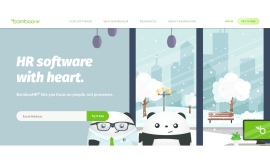Why Your CTR Isn't High? (And How to Fix It)
The world of digital advertising is packed with acronyms. There’s CPC, CPM, eCPM and many more. In this guide, we’ll be looking at one of the most important metrics for your advertising campaigns: click-through rate (CTR).
Your ad’s CTR is the number of times your ad is clicked on, expressed as a percentage of the number of times your ad is displayed. An ad that’s displayed 1,000 times and clicked five times, for example, has a clickthrough rate of 0.5%.
What’s a good CTR?
CTRs can vary massively based on a variety of factors. The type of ads you’re purchasing – display ads, search ads or social ads – all have different average CTRs.
Generally speaking, search ads, such as those purchased using the AdWords search network, will have higher CTRs that display ads purchased using the AdWords display network or through an independent media buy.
This is because search ads tend to directly target interested buyers. A person that’s searching for “computer parts” is more likely to click your search ad promoting your computer website than someone browsing an otherwise unrelated website.
CTR also varies based on the type of product or service you’re advertising. Exciting products like online games or discount offers are more likely to achieve a high CTR than something less interesting such as car financing or real estate investments.
Because of this, there’s no such thing as a ‘good’ CTR. Other factors, such as your ad position on Adwords or the relevancy of your ad placement on a display ad network can also affect your CTR.
Why aim for a high CTR?
Since you’re paying per click, what reason is there to achieve a high CTR? There are several reasons to aim for a high CTR, ranging from lower per-click costs to a better Quality Score on platforms like Adwords:
Optimizing your ads for the highest possible CTR can result in:
· A higher Quality Score on Google AdWords
· Lower cost-per-clicks (CPC), since the ad is more relevant
· Better ad placement on Google AdWords
· Much more traffic to your landing page
· Most of the time, a higher conversion rate
All of the above benefits assume you’re using a CPC bidding model on a platform like Google AdWords. On CPM-based platforms, the benefits of a high CTR are far greater – namely, a significantly reduced eCPC and a better return on investment.
What’s holding your CTR back?
Getting a high CTR requires creating very tight, specifically targeted ad groups, laser targeting your ads to your audience, and a deep understanding of what your target audience responds to.
Unfortunately, a lot of new advertisers make mistakes in trying to maximize their CTR. Remember that your CTR is a means to an end; it’s a metric that measures your ad’s performance, not the performance of your entire campaign.
Luckily, most beginner mistakes are easy to correct. Some of the most common first-time advertiser mistakes related to achieving a high CTR include:
· Creating misleading ads that ‘bait’ the user into clicking
· Forgetting to include a call to action (eg. “Click here!”) in ads
· Not using Google’s ad extensions to provide more information
· Never A/B testing ads to see which achieves the highest CTR
Sound familiar? If any of the above problems are holding back your campaign, don’t worry. They’re all surprisingly easy to fix using Google’s built-in testing options and a few basic direct marketing principles.

The first step in achieving a high CTR is laser targeting your ad groups. Create more ad groups targeting fewer keywords and hone in on your targets. Use features such as dynamic keyword insertion to make your ads as relevant as possible to users.
Focus on the benefits of your product and service, not the features. Make sure your ads all have a call to action that inspires users to click – even interested people will often fail to click your ads unless they’re prompted to.
Most of all, make sure your ads use all of Google’s ad components. Small things such as the display URL can make a huge difference. Test everything and don’t be afraid to tweak small details to see if they have an effect on your CTR.
Remember, Google AdWords is built from the bottom up for A/B testing. Test small variations in titles, ad copy and display URLs using the “rotate evenly” setting to see which ad performs the best.
Use Adwords’ conversion tracking feature to measure each ad’s CTR and its conversion rate. Over time, you’ll find that some ads outperform others; to optimize your campaign, pause the worst ads and focus on the best ones.
Putting CTR in context
CTR isn’t the most important metric for digital advertisers (that would be conversion rate or return on investment), but it’s a great metric for assessing the relevancy of your campaign to its audience.
By applying the principles above and constantly testing your ads, you’ll be able to maximize your CTR and enjoy a more profitable campaign. Start now by testing your top-performing ad against a variation and monitoring the results.
Recent Stories
Top DiscoverCloud Experts

Compare Products
Select up to three two products to compare by clicking on the compare icon () of each product.
{{compareToolModel.Error}}

















{{CommentsModel.TotalCount}} Comments
Your Comment